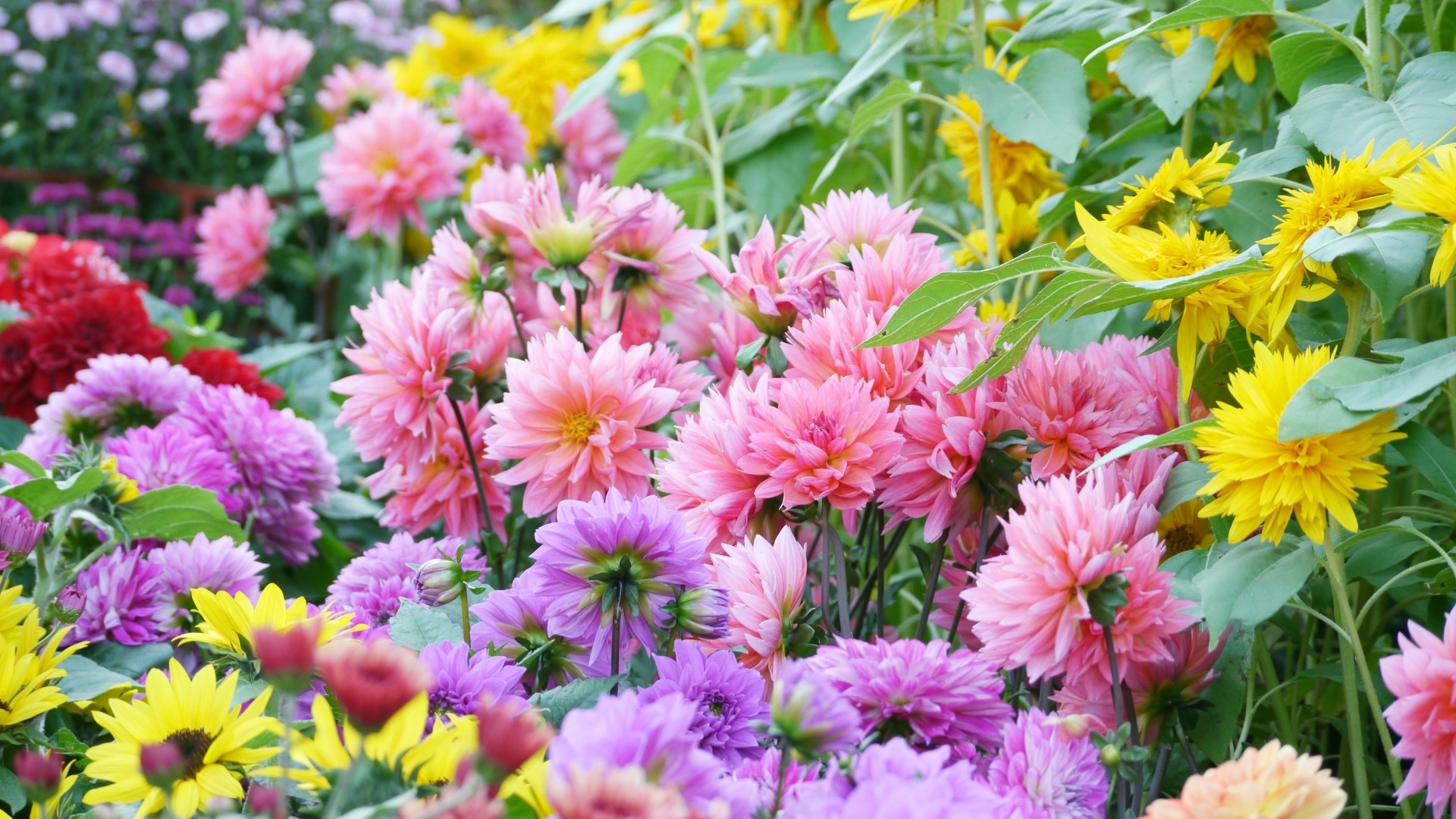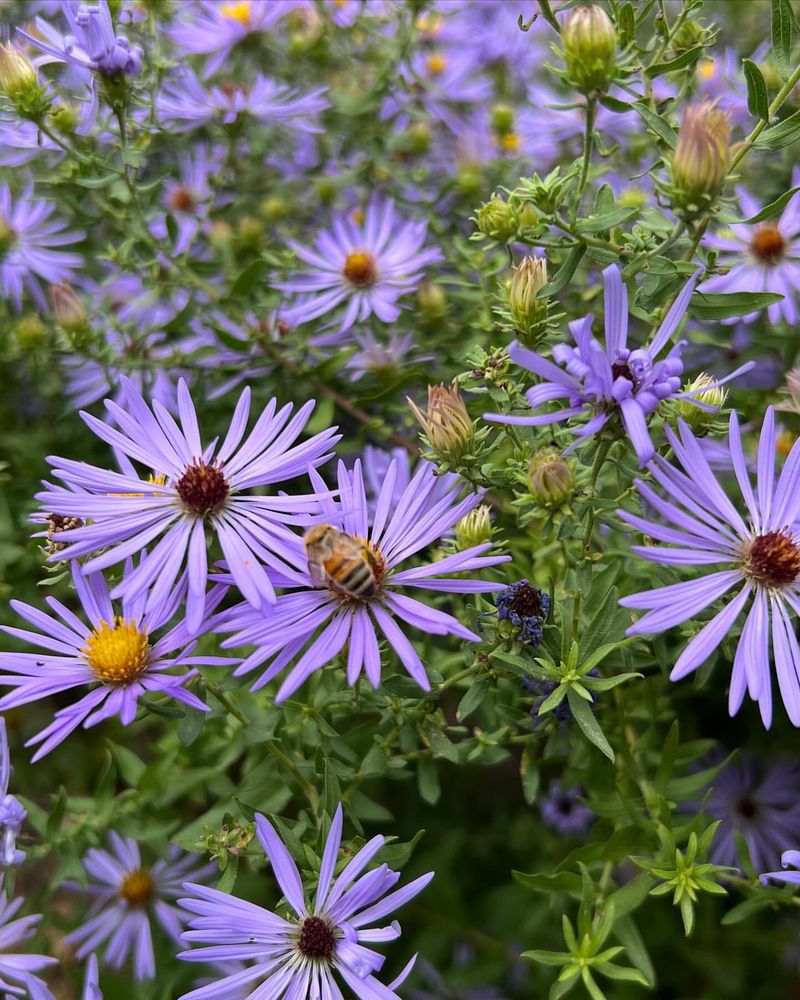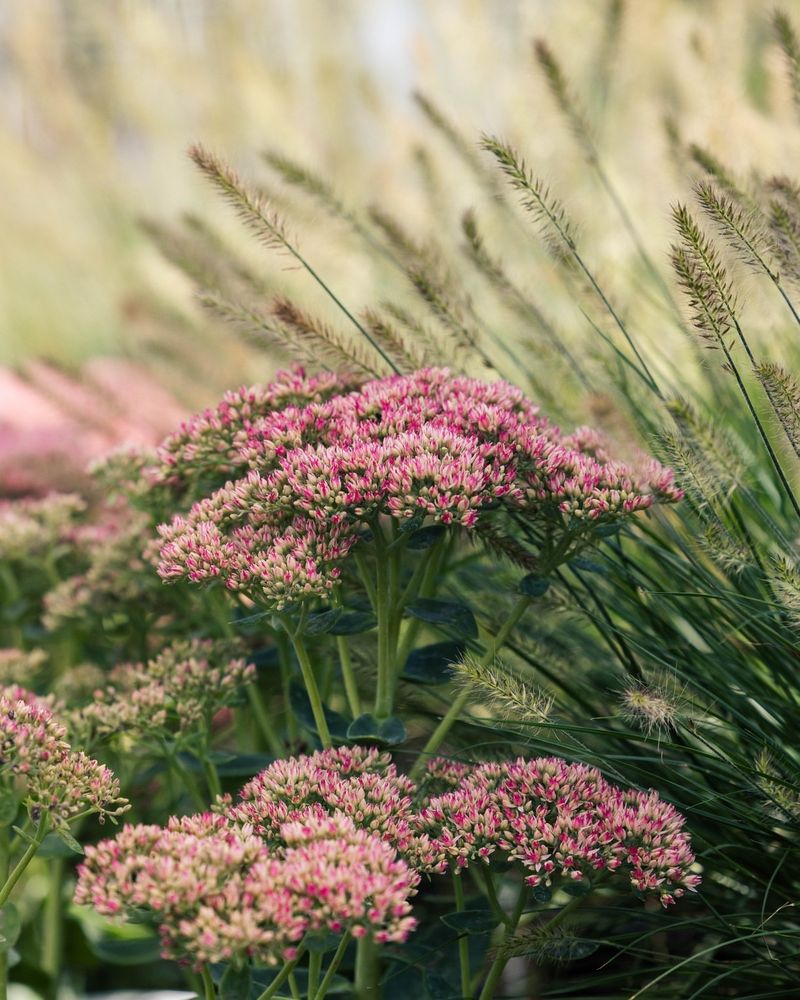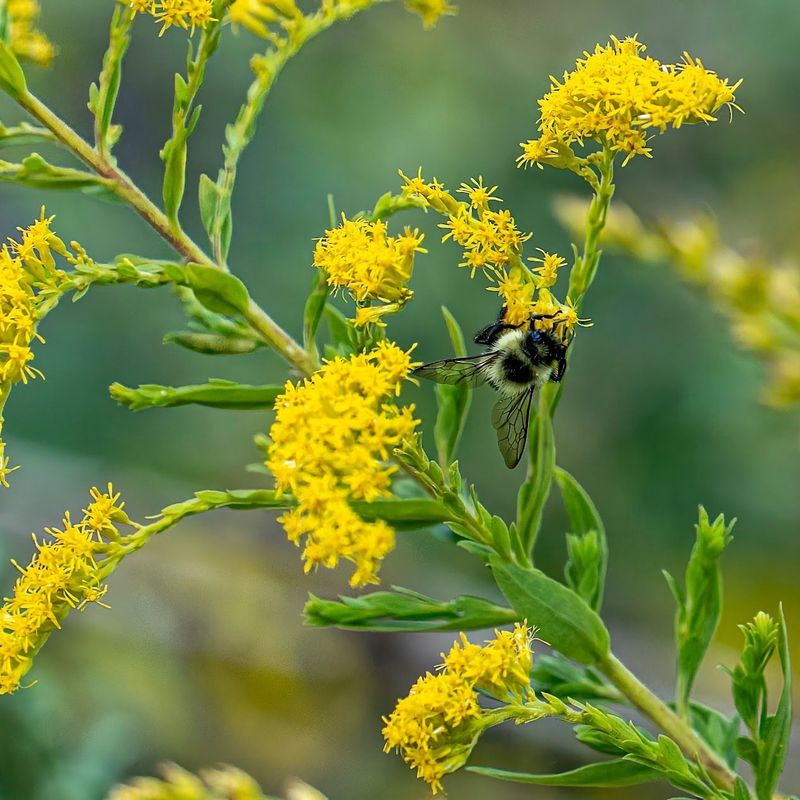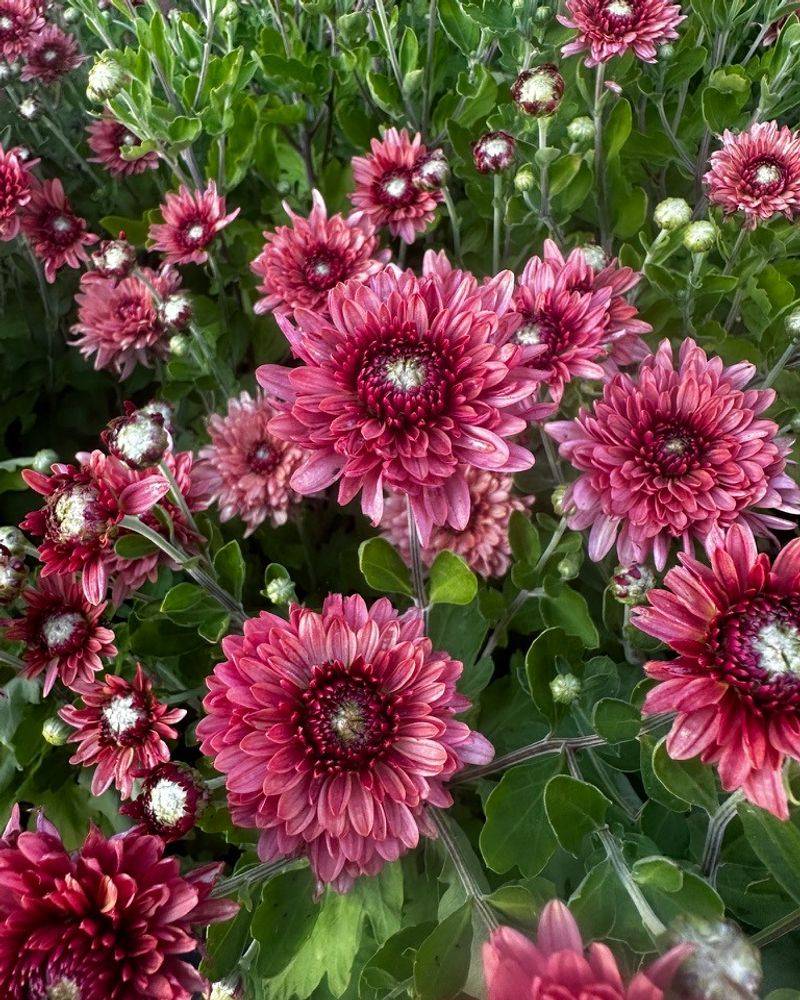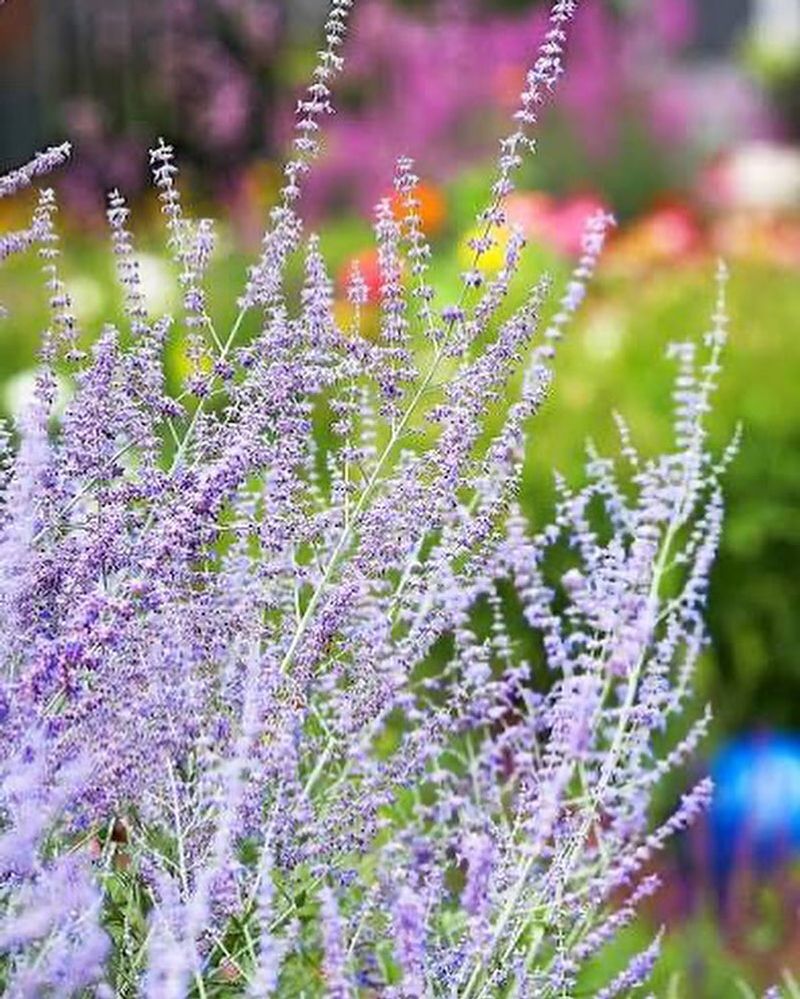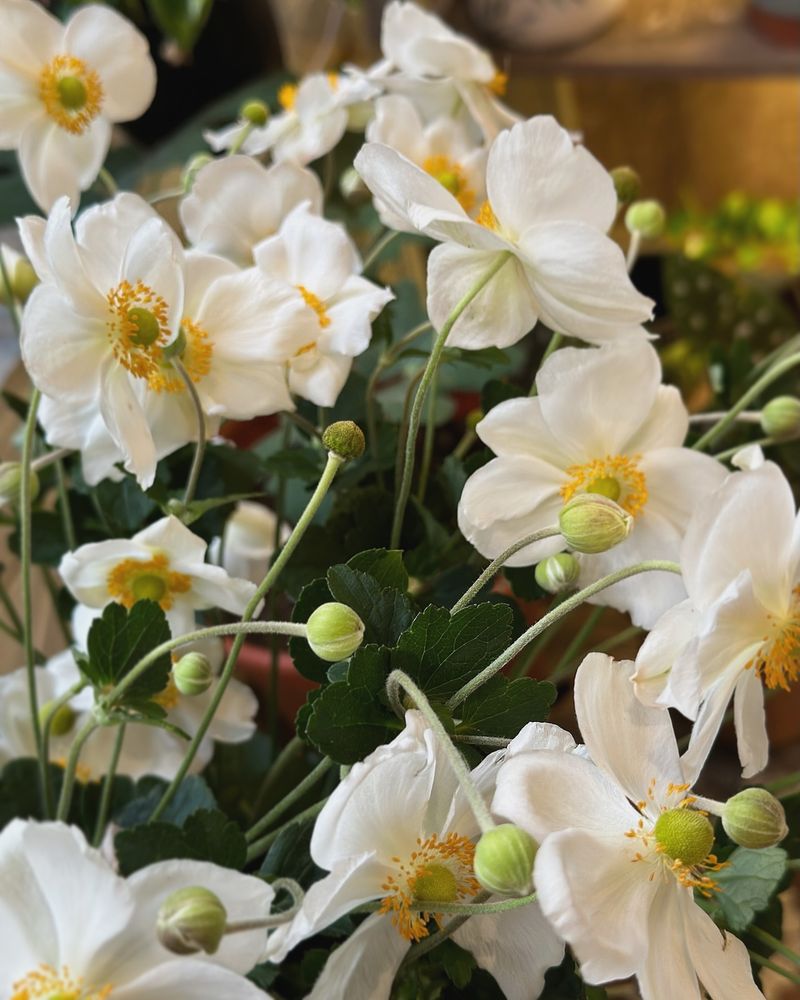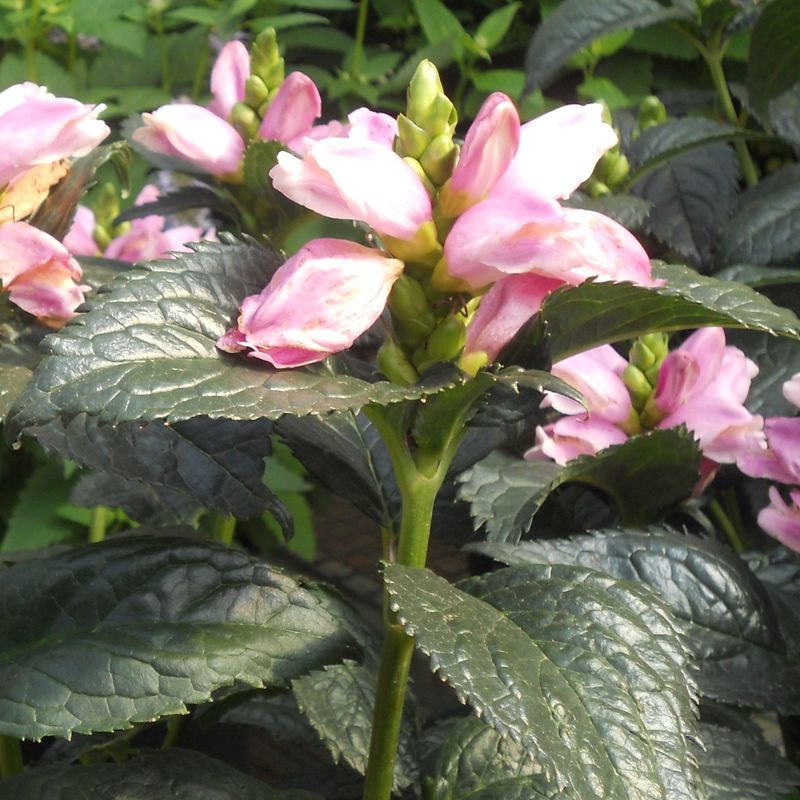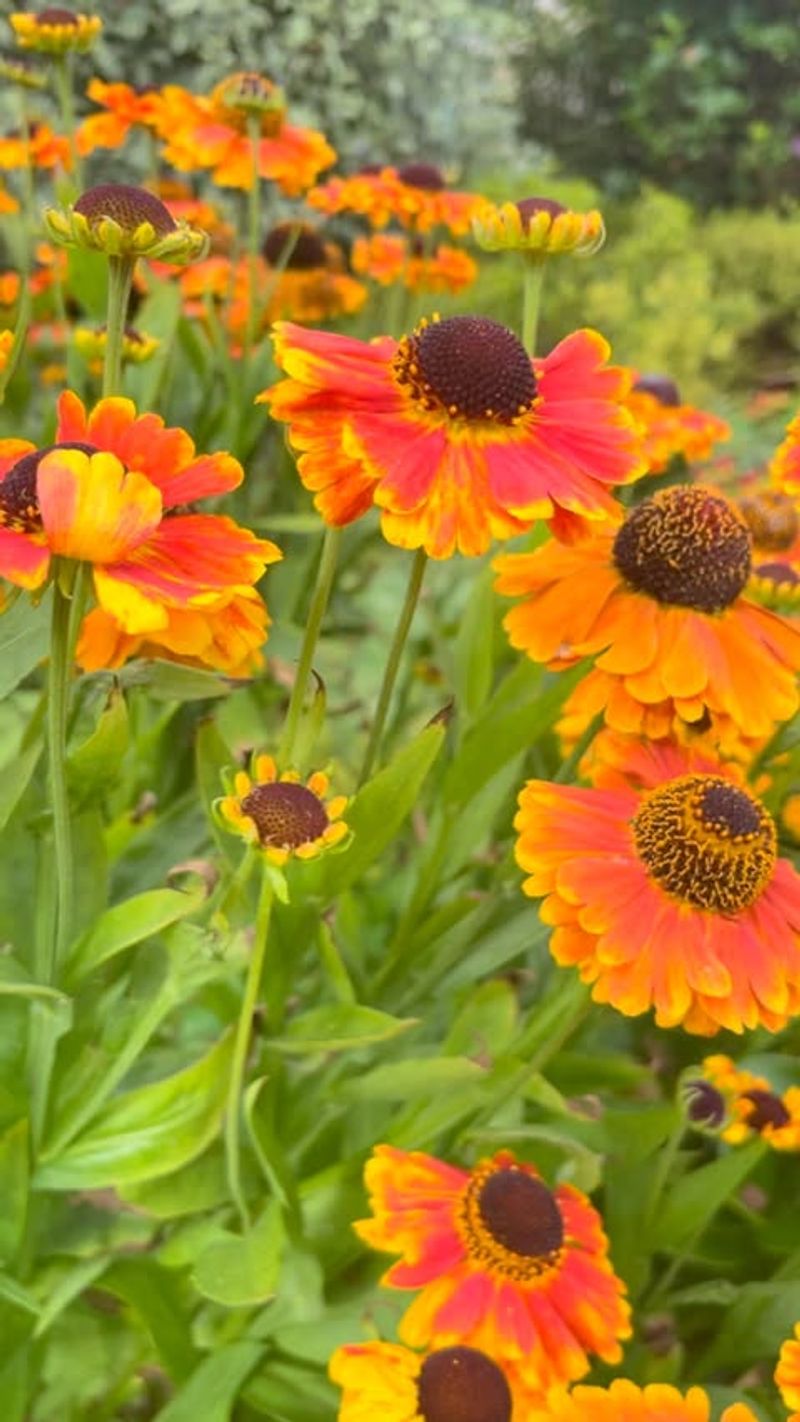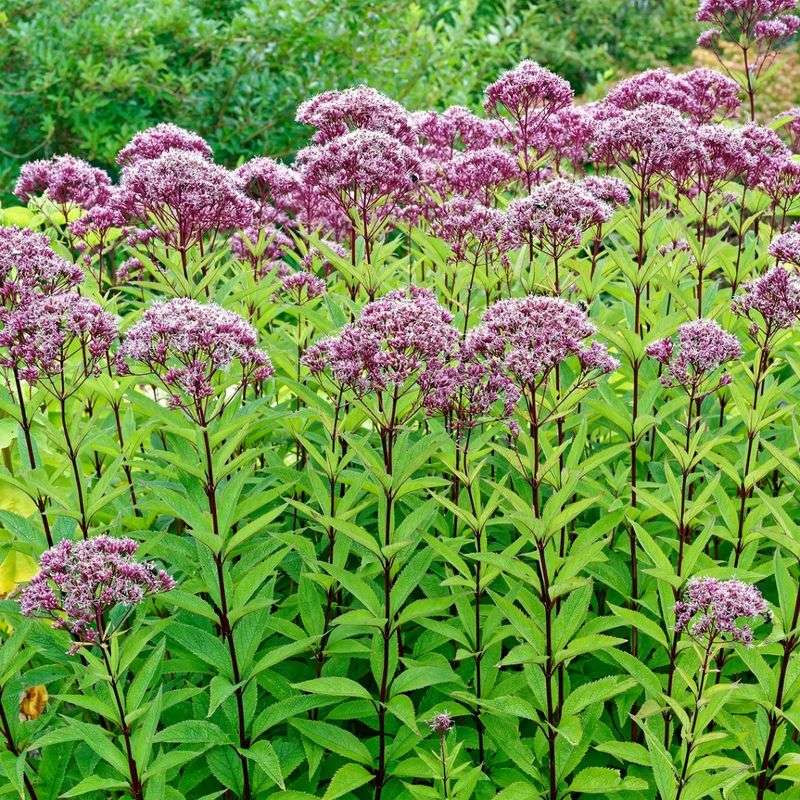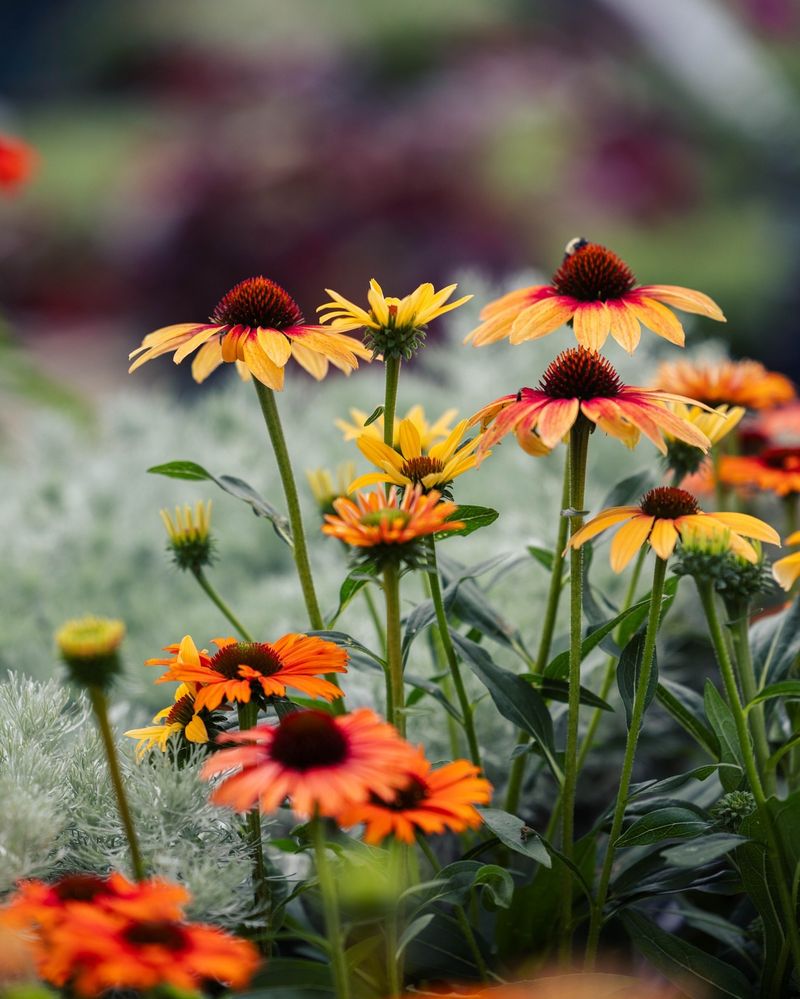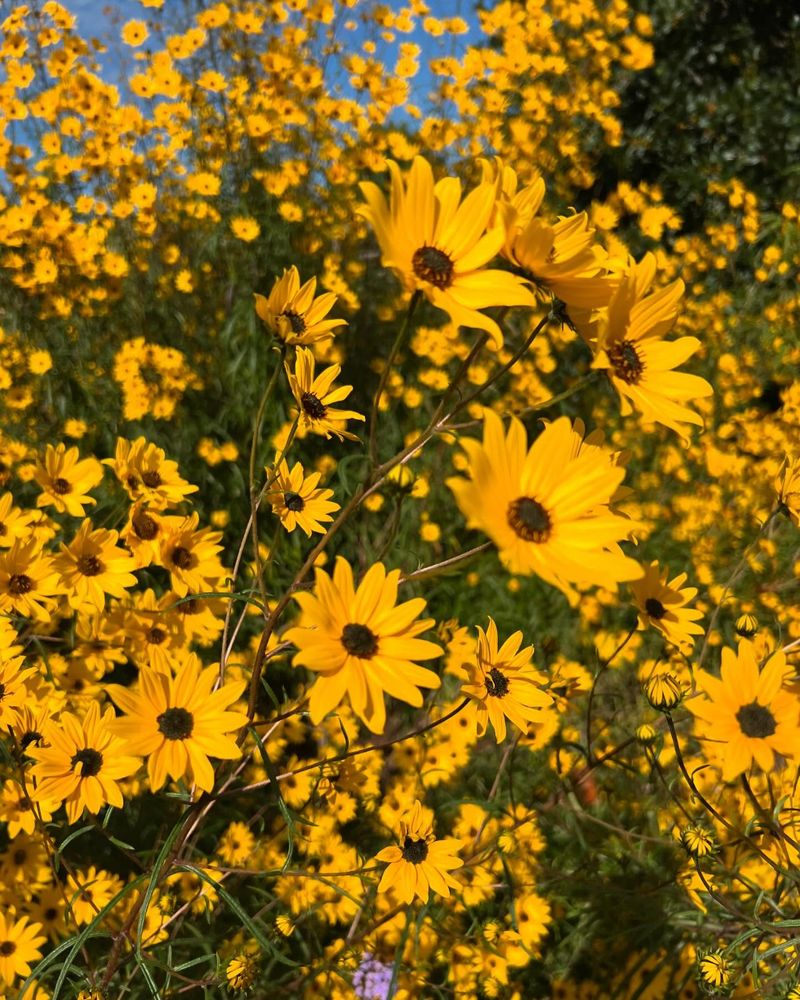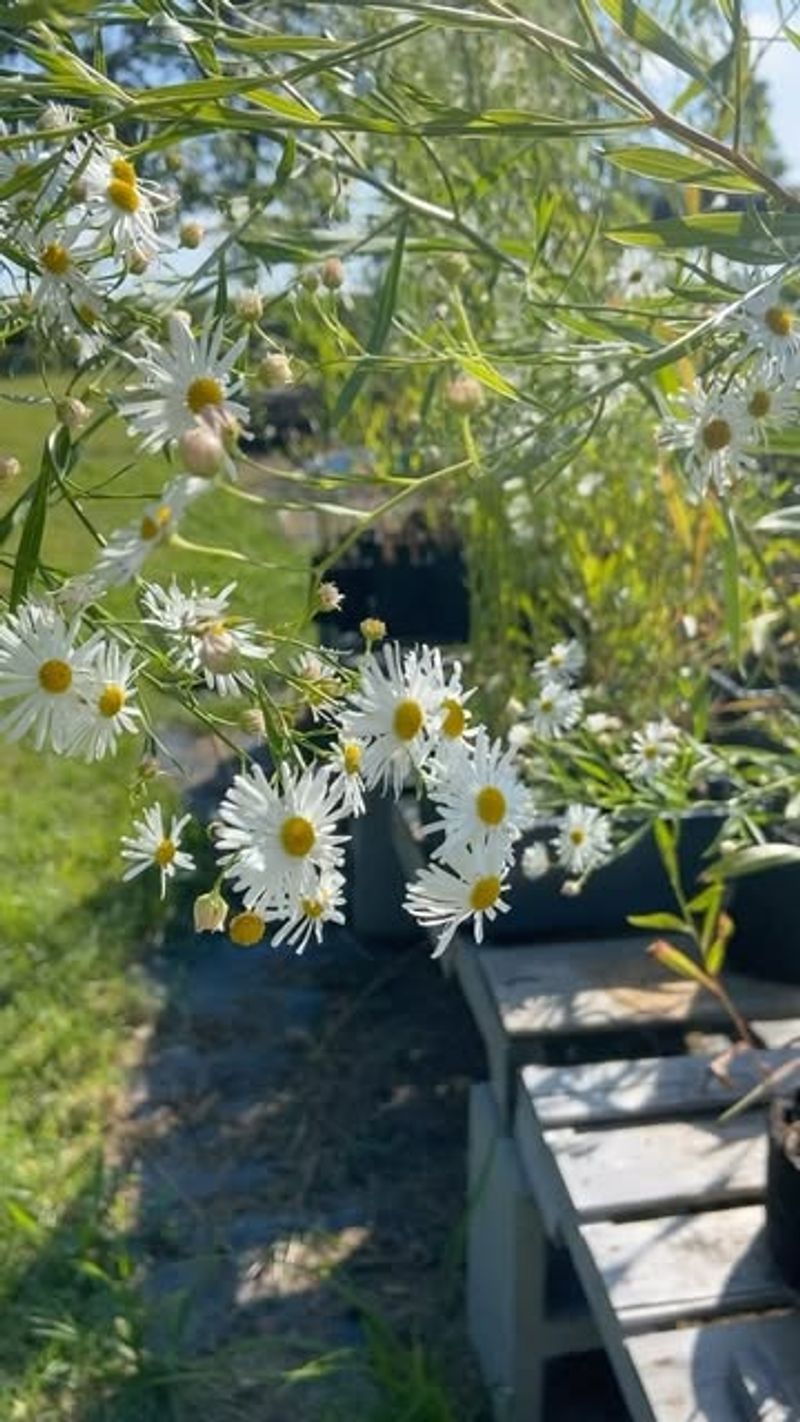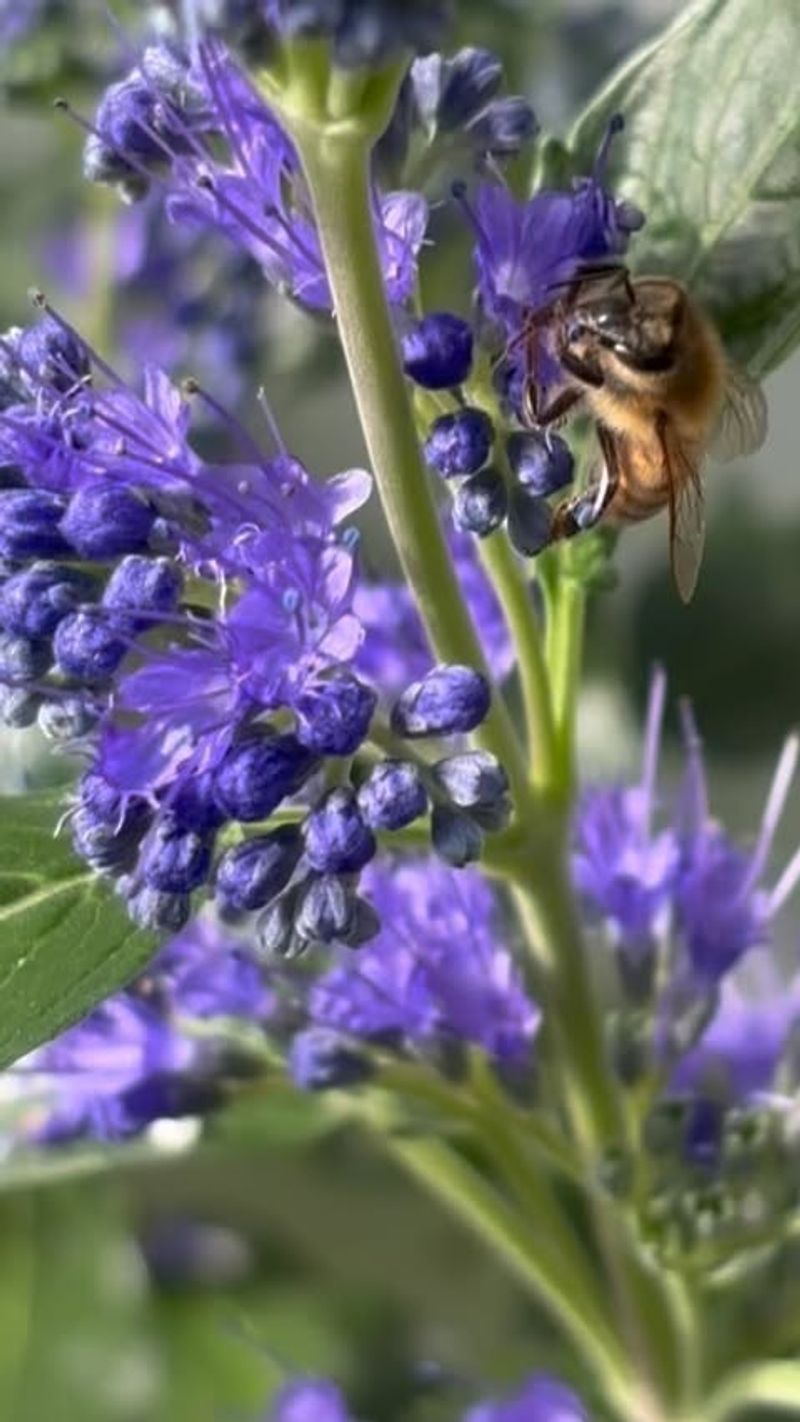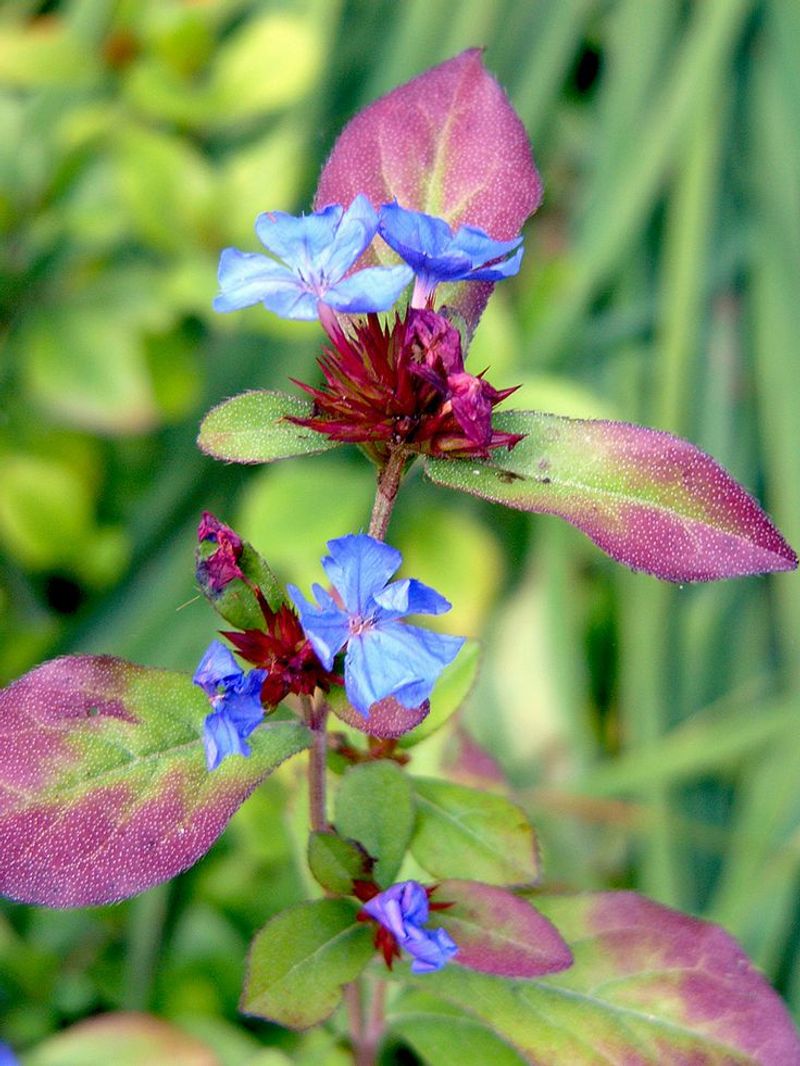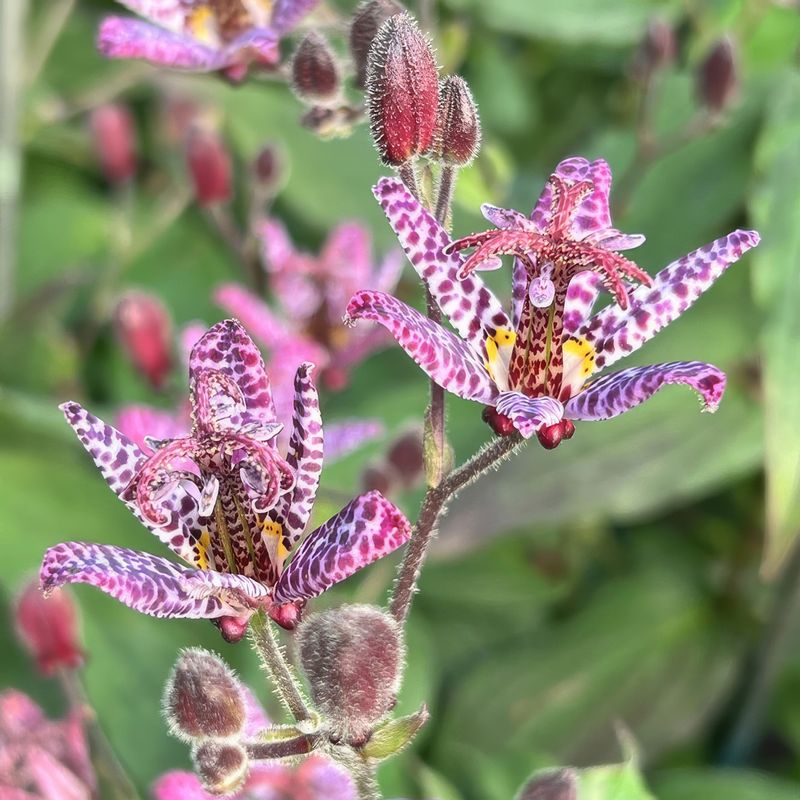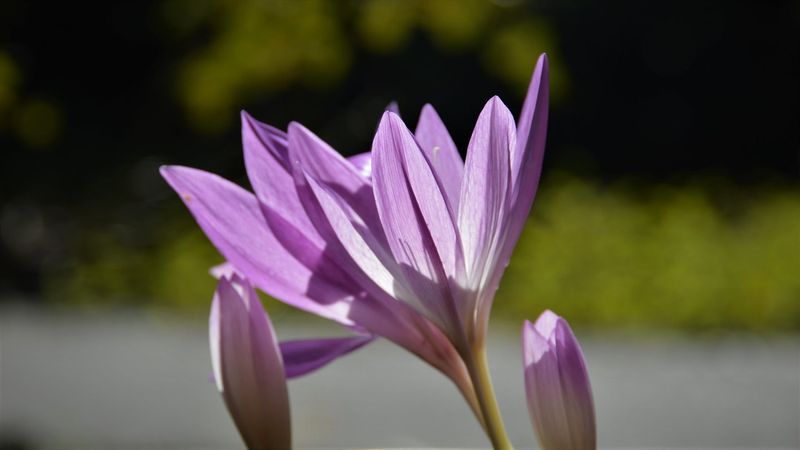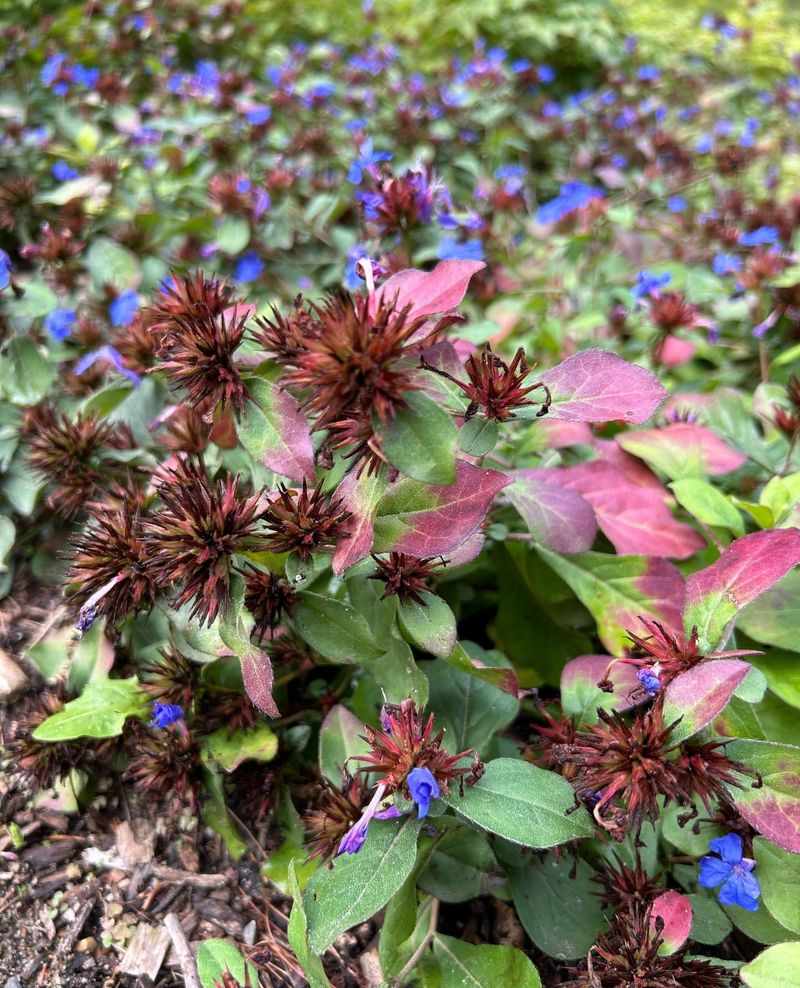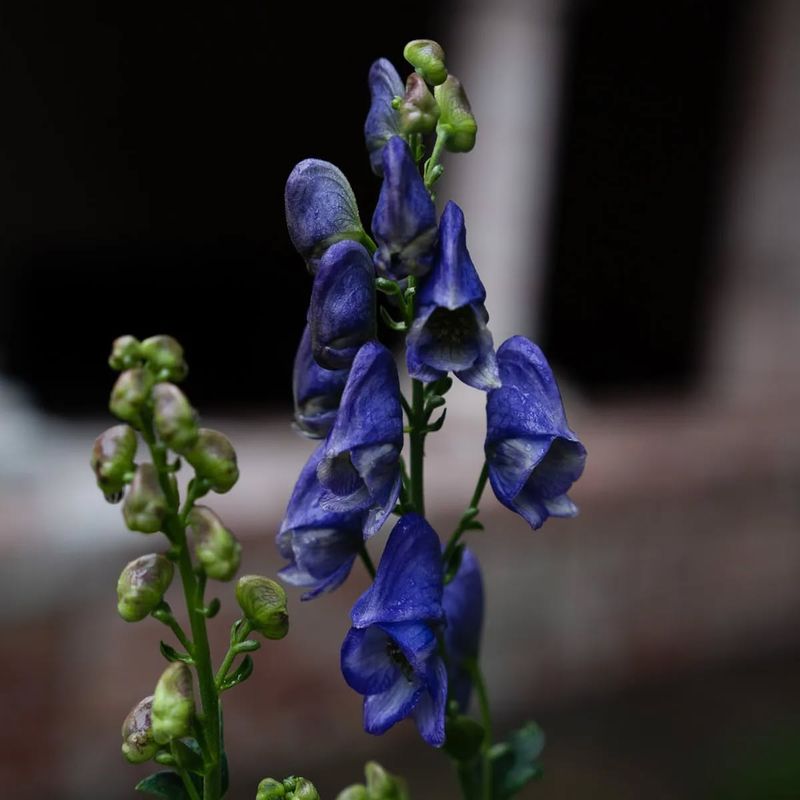When fall starts creeping in Iowa, it’s easy to feel like your garden’s show is over—but late-blooming flowers can change all that. I’ve found these resilient beauties to be real lifesavers, adding bursts of color just when everything else is winding down.
They brighten up crisp days and even handle the cooler temps without missing a beat. These flowers give your garden a final flourish that lasts well into autumn.
Let’s bring some late-season magic to your Iowa garden this fall!
1. Asters
Star-shaped blooms appear just when Iowa gardens need color most. These hardy natives thrive in our Midwestern climate, attracting butterflies well into October.
Plant them alongside ornamental grasses for a stunning fall display. Across Iowa, asters require minimal care while delivering maximum impact with their purple, pink, or white daisy-like flowers.
2. Sedum
Hardy and drought-resistant, these succulents put on their best show when other plants are fading. The flat flower clusters start pale green, then deepen to rich pink or burgundy as autumn progresses.
Iowa gardeners appreciate how sedum stands up to our unpredictable weather patterns. Their thick, water-storing leaves remain attractive even after frost has claimed more delicate plants.
3. Goldenrod
Contrary to popular belief, these golden plumes aren’t responsible for fall allergies! Native varieties bring sunshine yellow to Iowa gardens when days grow shorter.
Butterflies and bees flock to their nectar-rich blooms until the first hard freeze. Throughout the Hawkeye State, goldenrod creates dramatic sweeps of color when planted in groups along borders or naturalized areas.
4. Chrysanthemums
Fall’s quintessential flower comes in nearly every color except blue. Choose early, mid, and late-blooming varieties for continuous color throughout autumn in your Iowa landscape.
Look for hardy mums that can survive Iowa’s winters rather than florist types. With proper mulching, these cheerful blooms will return year after year, creating cushions of color when most perennials have faded.
5. Russian Sage
Silvery-gray foliage creates the perfect backdrop for lavender-blue flower spikes that last well into fall. This drought-tolerant perennial shines when summer bloomers have faded from Iowa gardens.
The aromatic leaves deter deer and rabbits, a welcome feature for Iowa gardeners battling wildlife. Even after flowering ends, the architectural stems add winter interest when coated with frost or light snow.
6. Japanese Anemone
Elegant pink or white blooms dance on tall, wiry stems above a mound of attractive foliage. These graceful flowers bring a touch of refinement to Iowa gardens from late August through October.
Unlike many fall bloomers, Japanese anemones prefer partial shade, making them perfect for brightening woodland edges. Throughout Iowa, they thrive in rich, moist soil where other late-season flowers might struggle.
7. Turtlehead
Named for their uniquely shaped flowers resembling turtle heads, these native perennials bloom from late summer into fall. Pink or white blooms appear just when Iowa gardens need a fresh burst of color.
Turtlehead thrives in moist areas where other plants might fail, making it perfect for rain gardens. Across the Hawkeye State, these tough natives attract butterflies while resisting deer browsing—a winning combination!
8. Helenium
Often called sneezeweed (though it doesn’t cause sneezing), helenium offers daisy-like blooms in rich autumn hues. The red, orange, and gold flowers brighten Iowa gardens when summer perennials have finished.
Pollinators can’t resist these nectar-rich blooms, ensuring your garden buzzes with activity well into fall. Throughout Iowa’s prairie regions, helenium recalls the state’s native landscape while providing weeks of late-season color.
9. Joe-Pye Weed
Despite its humble name, this native plant creates majestic towers of mauve flowers that butterflies adore. Reaching heights of 5-7 feet, it makes a dramatic statement in Iowa gardens from late summer into fall.
The vanilla-scented blooms attract monarchs fueling up for migration south. Throughout Iowa’s countryside, Joe-Pye weed thrives in moist areas, creating spectacular displays along stream banks and rain gardens.
10. Coneflowers
While they start blooming in summer, these prairie natives keep going strong when autumn arrives. The distinctive seed heads provide food for goldfinches long after the petals have dropped in Iowa gardens.
New varieties offer sunset hues perfect for fall color schemes. Across the Hawkeye State, coneflowers require almost no maintenance while providing months of blooms and wildlife value through changing seasons.
11. Helianthus
Perennial sunflowers bring golden cheer to Iowa gardens just as summer fades. Unlike their annual cousins, these natives return year after year, forming impressive clumps of bright yellow daisies.
The nectar-rich blooms support late-season pollinators preparing for winter. Throughout Iowa’s countryside, these tough prairie plants withstand drought, poor soil, and windswept conditions while blooming reliably each fall.
12. Boltonia
Thousands of star-shaped white or pink flowers cover these robust perennials from late summer into fall. Often called false aster, boltonia creates clouds of delicate blooms that brighten Iowa gardens when days grow shorter.
The sturdy stems rarely need staking despite their impressive height. Throughout Iowa, boltonia thrives in average soil, tolerating both wet springs and dry late summers with equal grace.
13. Bluebeard
Powder-blue flowers emerge in late summer just when Iowa gardens need a color boost. This woody perennial (sometimes called blue mist shrub) attracts countless butterflies with its nectar-rich blooms.
Silvery-green foliage provides attractive contrast even before flowering begins. Across Iowa’s growing zones, bluebeard bounces back reliably each year even after harsh winters, blooming on new growth when other shrubs have finished.
14. Ceratostigma
Brilliant gentian-blue flowers appear just as this ground cover’s leaves begin turning ruby-red. Also called plumbago, it creates a stunning two-tone effect in Iowa gardens throughout autumn.
Low-growing and well-behaved, it’s perfect for edging paths or spilling over walls. Throughout Iowa’s hardiness zones, ceratostigma survives winter with minimal protection, returning each year with increased vigor and fall beauty.
15. Toad Lily
Exotic-looking spotted blooms appear along arching stems in dappled shade. These unusual flowers bring orchid-like beauty to Iowa gardens just when woodland areas need brightening.
The distinctive speckled petals catch visitors’ attention in autumn gardens. Throughout Iowa, toad lilies thrive in rich, moist soil where they form slowly expanding clumps that bloom more prolifically each year.
16. Autumn Crocus
Unlike spring crocus, these bulbs send up leafless flowers in September and October. The goblet-shaped blooms in purple, pink, or white appear as if by magic in Iowa gardens long after other bulbs have finished.
The foliage follows in spring, gathering energy for next fall’s display. Across Iowa, autumn crocus creates surprising bursts of color in lawns, beneath trees, or tucked among fading perennials.
17. Leadwort
Deep blue flowers appear just as the foliage begins turning vibrant red in fall. This versatile ground cover creates a spectacular color combination in Iowa gardens from late summer through autumn.
Low-growing and spreading gradually, leadwort fills difficult spaces with minimal care. Throughout the Hawkeye State, it thrives in average soil, creating a maintenance-free carpet that peaks in beauty when other plants are fading.
18. Monkshood
Hood-shaped purple-blue flowers rise on tall spikes when few other plants are blooming. These shade-tolerant perennials extend the season in Iowa woodland gardens well into October and sometimes November.
Deer and rabbits avoid monkshood due to its toxicity, a plus for Iowa gardeners. Throughout the state’s wooded areas, these dramatic flowers bring a touch of mystery to autumn gardens with their distinctive, hooded blooms.

